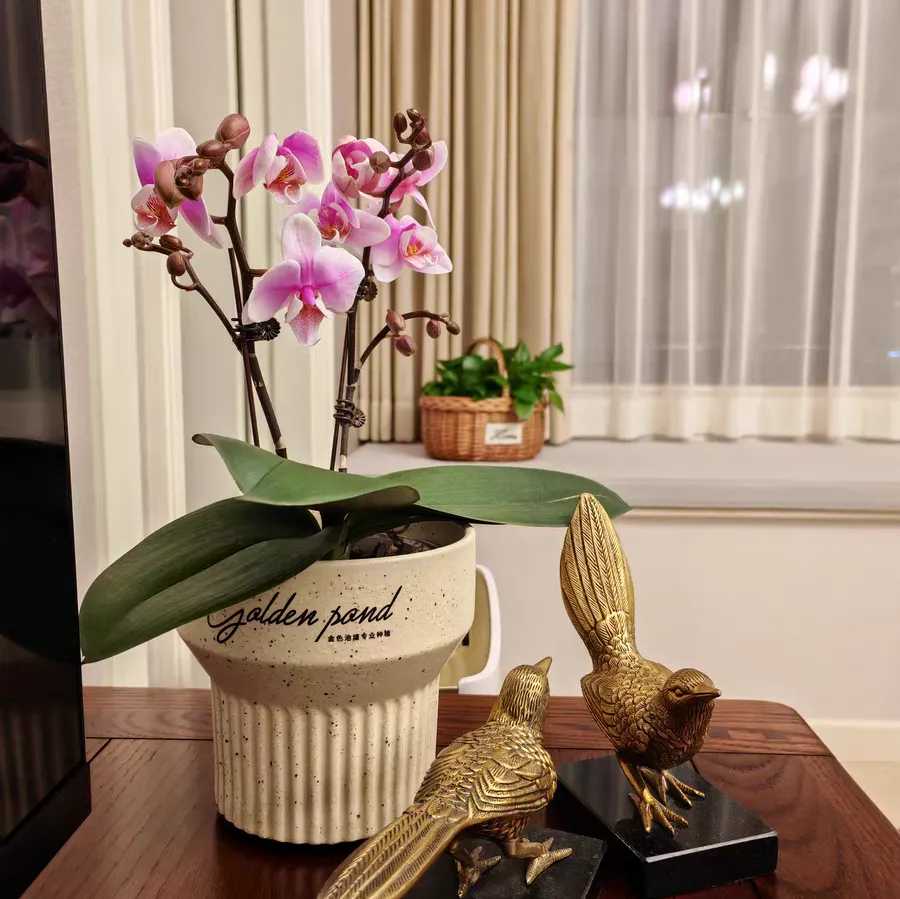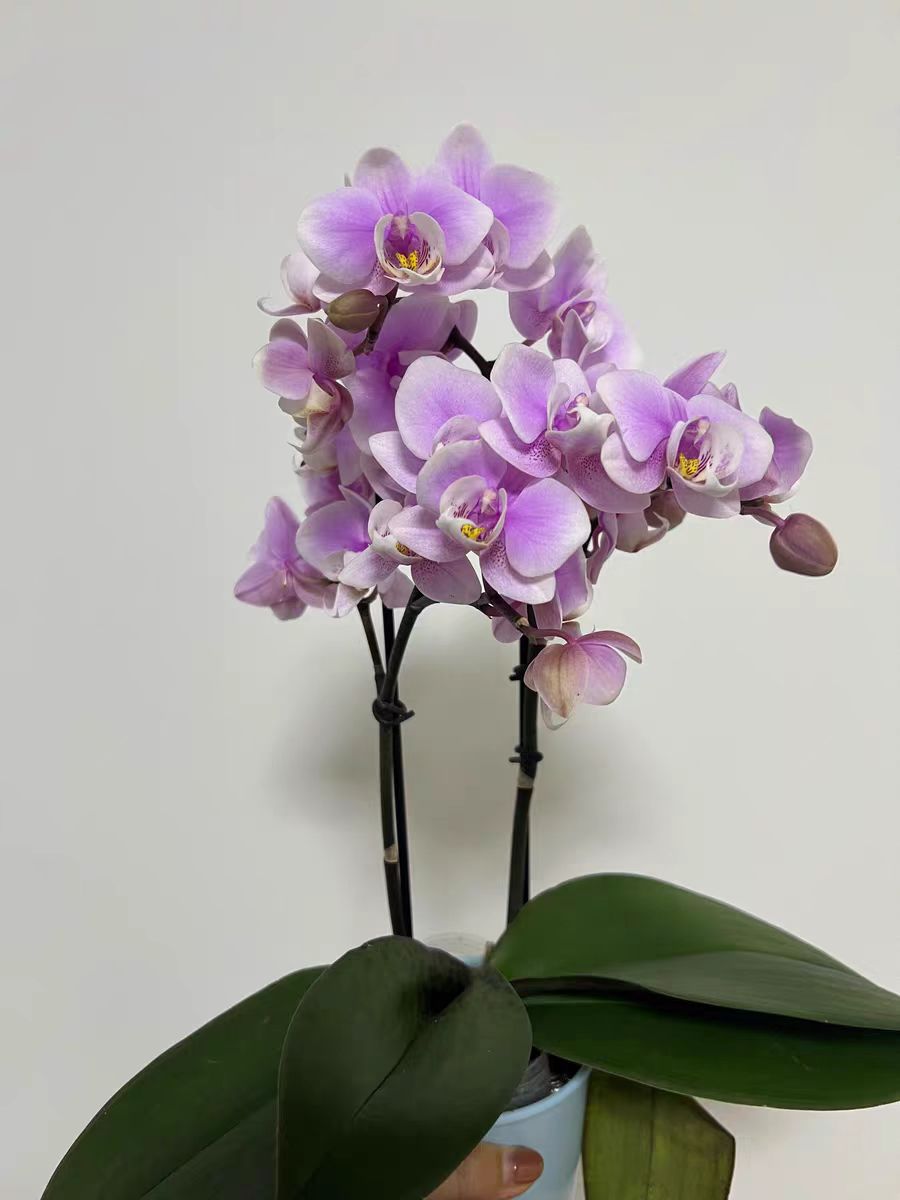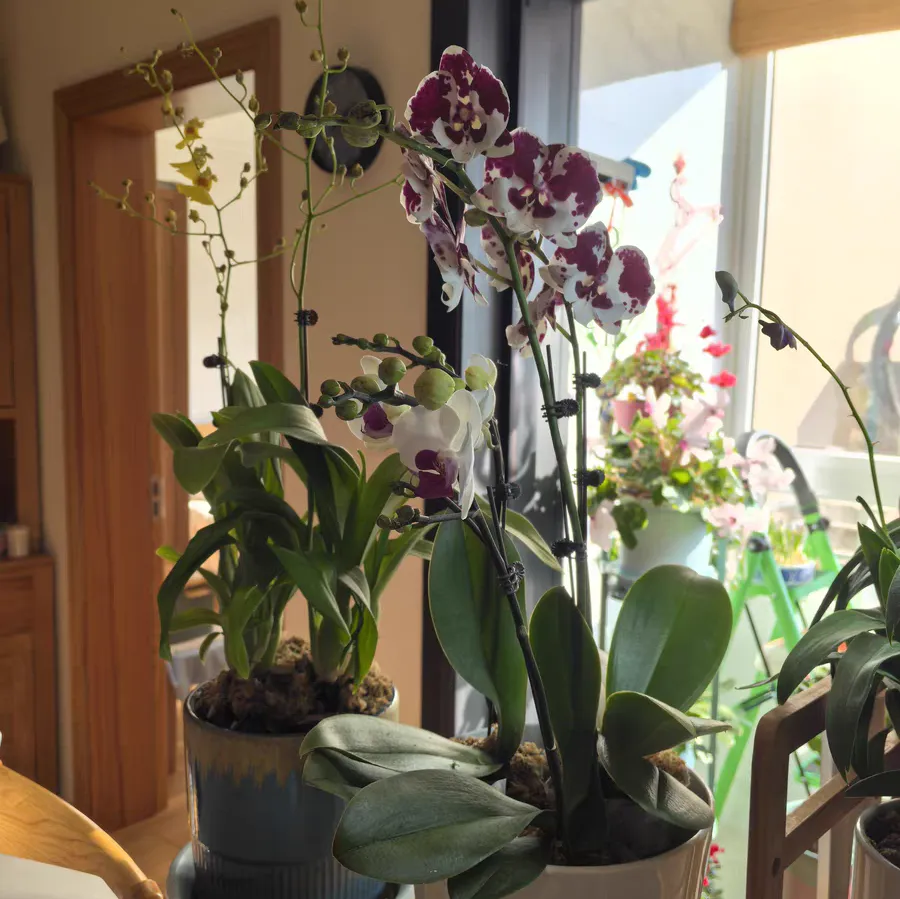Friends who grow Phalaenopsis orchids must have had this kind of trouble: when the roots are not visible, how on earth should we water them? Don't worry. Today, I'm going to tell you the tricks of watering Phalaenopsis orchids.
Phalaenopsis orchids are quite different from other flowers. They are epiphytic orchids, and their roots can not only absorb water and nutrients but also carry out photosynthesis. Sometimes, when the roots are not visible, it may be because they are covered by substrates such as sphagnum moss or bark, or it may be due to the planting method. However, just because the roots are not visible doesn't mean we can't water them.
First of all, you can check the state of the substrate. If you use sphagnum moss, it will turn lighter in color when it's dry and feel loose when touched; when it's wet, it will be darker in color and more compact. If it's a bark substrate, it will become brittle and hard when dry, and the color will be dim. When it's wet, it will be softer and brighter in color. Through these changes, you can roughly know when it's time to water.
There is also a simple method, which is to weigh the flower pot. Hold the flower pot in your hand and feel its weight before and after each watering, and remember the weight after watering and the feeling of it getting lighter as the water gradually evaporates. After a long time, just by weighing the flower pot, you'll know in your heart whether it's necessary to water or not.
The watering method is also very important. If the roots are not visible, the soaking method is quite good. Find a container larger than the flower pot, fill it with clean water, put the Phalaenopsis orchid pot into it, and let the water slowly seep in through the drainage holes at the bottom of the flower pot. Stop when the surface of the substrate is slightly wet. By watering in this way, the water can be evenly distributed in the substrate, and it's not easy for the roots to rot.
The watering frequency is not fixed either; it depends on the season and the environment. In summer, when the weather is hot and the water evaporates quickly, you may need to water it once every two or three days; in winter, when the temperature is low and the water evaporates slowly, watering once every seven to ten days is enough. If the indoor humidity is high, you should reduce the number of waterings; if the humidity is low, you should water more.
Although growing Phalaenopsis orchids can be a bit troublesome, as long as you master these little watering tips, even if you can't see the roots, you can still take good care of the Phalaenopsis orchids, make them bloom beautifully, and add a lot of vitality to your home!
How should we water the Phalaenopsis orchids when their roots are not visible?

Share with
Tagged in :




Leave a Reply